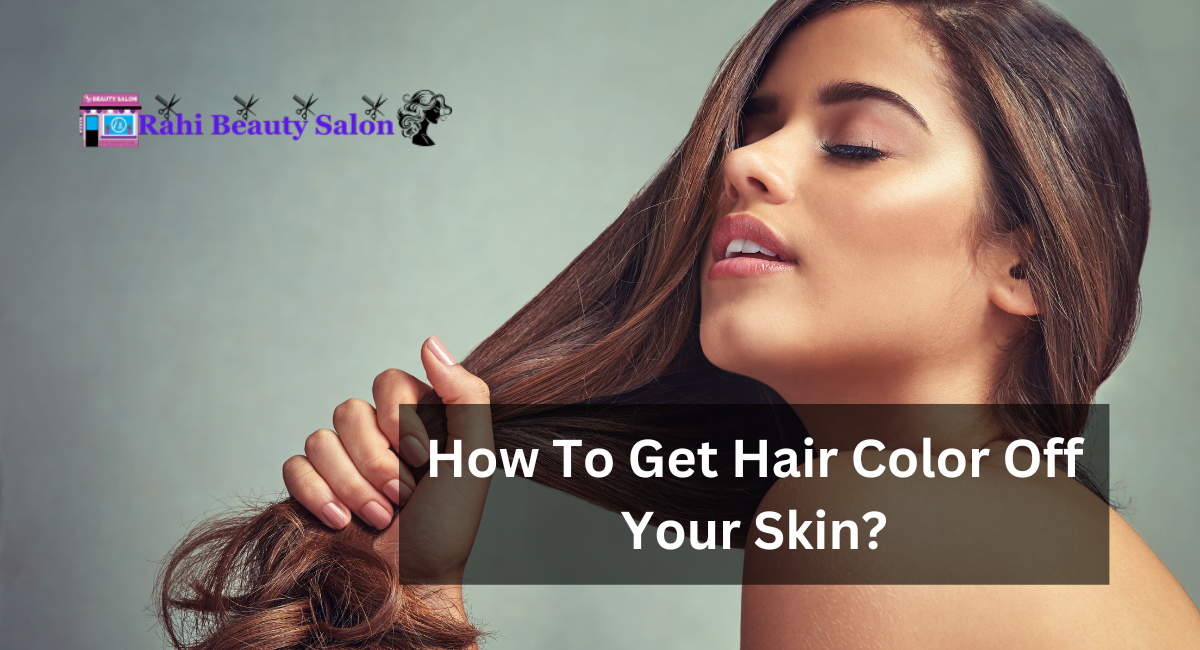Whether you’re an experienced do-it-yourself hair color user or someone who has recently had their hair professionally colored, those unsightly hair color stains can be annoying. However, there is no need for concern; the removal of hair color from the epidermis is a feasible undertaking, and there are a multitude of methods and products at your disposal.
This article will delve into the skill of precisely and effortlessly removing hair color from the epidermis. Using a variety of specialized products and expedient at-home remedies, we will walk you through the process of regaining stain-free skin and putting an end to those dye disasters.
How To Get Hair Color Off Your Skin?
Although removing hair color from the epidermis can be difficult at times, there are several effective products and methods available to assist you in doing so. Describe how to do it below:
1. React Promptly
It is simpler to eliminate hair color stains the sooner you take action to address them. Attempt to cleanse your epidermis immediately after noticing the stains.
2. Make Use Of Soap And Water
Using tepid, soapy water to cleanse the stained areas is the most straightforward approach. Apply a gentle scrub with a soft cloth or sponge to the stained epidermis. Several repetitions of this procedure may be necessary.
3. Soda For baking And Water
Combine water and baking soda to form a paste. Rinse after applying it to the soiled areas and gently rubbing as a gentle abrasive; baking soda may assist in eliminating the stain.
4. Toothpaste Contains
White, non-gel toothpaste can function as a moderate abrasive cleaner. After gently rubbing a small quantity into the stain, rinse.
5. Hydrocarbon Jelly
After coating the soiled skin with petroleum jelly, allow it to remain in place for several hours or overnight. Utilize a delicate cloth or tissue to remove it. This technique may assist in dissolving the hair pigment.
6. Mineral Oil Or Baby Oil
After massaging infant oil or mineral oil into the stained area of skin with care, remove it with a tissue or cloth. This technique may aid in the dissolution of hair pigment.
7. The Use Of Alcohol Rubbing
Apply rubbing alcohol to a dampened cotton ball and rub the stained skin gingerly. Caution is advised when employing this technique, as alcohol can cause drying to the epidermis. Following alcohol use, hydrate the epidermis.
8. Removers Of Specialized Stains
Specialized stain removers are available for eliminating hair color stains from the epidermis. Frequently effective, these products are available at cosmetic supply stores.
9. Nail Polish Eliminator
Using an acetone-based nail polish remover with caution is advised when attempting to eliminate hair color traces. To prevent excessive drying of the epidermis, moisturize after using acetone.
10. Preventive Actions
Before coloring your hair, implement a barrier ointment or petroleum jelly along your hairline and ears to prevent hair color from leaving any stains on your skin. This will aid in preventing skin discoloration caused by the color.
11. Proficient Assistance
If alternative solutions fail to resolve the discoloration, consult a professional dermatologist or hairdresser. Additionally, they might have access to more potent stain-removing remedies and can offer expert advice.
How Does One Remove Hair Pigment Without Causing Skin Discoloration?
To eliminate hair pigment without causing skin discoloration, adhere to the following guidelines and precautions:
1. Employ Gloves
Always use the disposable mittens in the hair color kit, or bring your latex or plastic gloves when applying hair dye. In addition to safeguarding your palms, this will facilitate precise application.
2. Apply Hair Dye Carefully
Utilize great care when implementing the hair pigment. Utilize a brush or applicator to ensure uniform application, making every effort to prevent contact with the epidermis. Approach your tasks slowly and with diligence.
3. Remove Excess Dye Immediately
Immediately remove any hair dye that becomes apparent on your epidermis while it is being applied using a damp cloth or cotton ball. A prompt response can avert the occurrence of discoloration.
4. Safeguard Your Clothing
To prevent hair dye droplets from damaging your shoulders and clothing, don an old shirt or utilize a towel. To safeguard your dress, consider using a color or a cape explicitly designed for hair coloring.
5. Employ A Tint Brush
A pigment brush can improve the precision and control of hair dye application. This may prevent you from coming into unnecessary contact with your epidermis.
6. Hairline Wipe
Wipe gingerly along the hairline, neck, and ears with a damp or barrier cloth before rinsing out the hair dye. This will eliminate any stray stain that may have made contact with your epidermis.
7. Be Vigilant During Rinsing
Carefully rinse the hair pigment out when the time comes. While tilting your head backward, cleanse your hair in a direction that prevents water from flowing over your face and neck. A gentle water discharge should be utilized to avoid splashing.
8. Use a Color-Friendly Shampoo
Utilize, following rinsing, a color-safe cleanser explicitly formulated for colored hair. This can assist in the removal of any residual dye from the epidermis and scalp.
9. Implement A Post-Color Remedy
Numerous hair dye packages contain a conditioner or post-color treatment. As directed, apply this treatment to your hair while avoiding your epidermis.
Having hair color stains on the epidermis is not necessarily a cause for alarm. By utilizing appropriate instruments and techniques, it is possible to successfully eliminate hair dye residue and achieve the desired final appearance. Bear in mind that while prevention is preferable, there are a variety of techniques available to assist you in restoring stain-free skin if stains do occur. Options abound, from investing in specialized stain removers to utilizing everyday domestic items such as dish soap and baking soda.
Thanks for reading.
